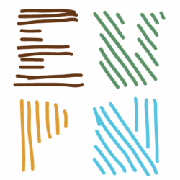Design
Design is an integral part of permaculture. Without design there is no permaculture. It's about observation, evaluation decision making, implementation and reflection.
Design process
There are several design processes used in permaculture design.
The original by Mollison developed process is called CEAP. It's an abbreviation for Collect site information; Evaluate the information; Apply permaculture principles; Plan a schedule of implementation. (it is missing an Evaluation and Refelction stage). That's why the modern version is called CEAPER.
SADIMET and OBREDIMET are more or less the same. The SADIMET abbreviation is Survey, Analysis, Design, Implement, Maintain, Evaluate, Tweak while OBREDIMET is Observe, Boundaries, Resources, Evaluate, Design, Implement, Maintain, Evaluate, Tweak.
Looby's design web, a design framework developed by Looby Mcnamara and published in her People and Permaculture book, is compared to the linear or circular design processes an easier approach to design.
Patrick Whitefield describes another one in his Earth care manual.
Over the years many different processes got developed.
They all have in common that they scaffold design for the designer and offer a basic framework to work with.
Tools
Within permaculture design we use a lot of different tools. There are some basic tools that are used often, while others are used for certain settings, for example when the design involves many stackholders
Find below some of them:
- Plus, Minus, Interesting
- 6 thinking hats (DeBono)
- Soil analysis (Water bottle method)
- A-Frame
- Before and After images
- SMART Goals
- SWOC
Evaluation
Every design involves an evaluation stage at the end. During that stage we check whether or not our design fulfils its functions and needs.
Reflection
- What did I learn from what my design?
- What was worst?
- What was best?
- What will I change?
- What are the next steps?
